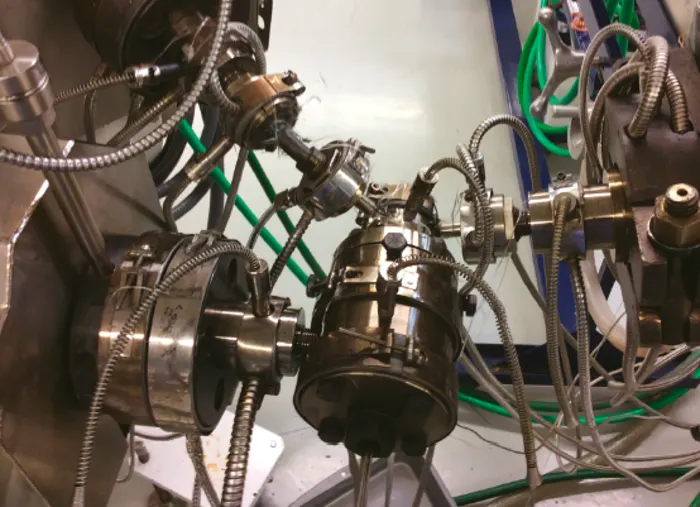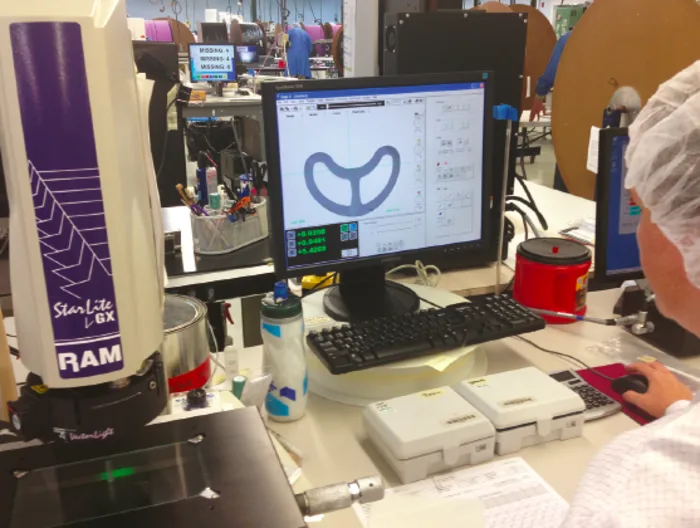Avoiding Pitfalls in Development of Advanced Custom Extrusions
The custom medical extrusion industry is growing in all directions. The push to be minimally invasive is pushing devices to be smaller and smaller. Cutting-edge raw materials are constantly being reformulated to enhance or create new mechanical and biologic characteristics in the function of the part. In short, the matrix of technologies integrated into today’s catheters and devices has become increasingly complex, and subsequently interpreting quality is becoming more challenging for all parties either producing the component parts or using the parts.

Adding to this challenge is the fact that in integrating new technologies, desired results can be theoretical and may not even be indicated on the engineering/quality specification used in making the part. The perception of quality of the part by the extruder and the customer must be mutually understood. When something about the part isn’t quite right, the complaint is as complex as the part, and reconciling the perceived flaw is just as complex, requiring the extruder and the customer to raise the standard of working together and sharing knowledge.
THE REQUEST FOR QUOTATION
The request for a quotation is the first step. Invest time up front — it pays dividends. The extruder needs more than just a drawing/specification to deliver a reliable quotation. A good practice is to communicate right away with the client to discuss the new part. A short list of considerations could include:
• What is critical to function
• Raw materials to be used and potential issues with processability
• Extrusion expectations (How much development and expected quality of the prototype parts)
• Tolerances • The customer’s expectations
• What type of post-processing will the customer perform on the part
• Realistic lead times • Issues related to geometric profiles
• Discuss the technical challenges presented by the part and what could go wrong
• The scope of the specification and are there unspecified features important to form and function
• Are there samples to be shared
• Methods of inspection to be used
BE GOOD LISTENERS
During these early but crucial conversations, it is important to be good listeners. The extruder should know his capabilities and should say when a part represents a challenge they have not tackled before. New projects can die quickly by the non-delivery or poor quality of a part requiring extrusion technologies not suited to the expertise of a particular extruder. In selecting an extruder, trust your gut as it’s generally right, and this decision is likely the most important decision in a project requiring an advanced, complex medical extrusion.
Depending on the technical complexity of the part, the up-front discussions could be extensive, and the important aspect of writing a reliable quotation is having a comprehensive understanding of the new part.
AVOIDING DEFECTS WITH PLANNING AND COMMUNICATION

Avoid defects through good planning and effective communication. With the acceptance of the purchase order, it becomes time for the engineering and manufacturing teams to start planning extrusion of the part. The same information and understanding of the part required to write a good quote is also essential to effectively planning extrusion of the part. Developing a detailed checklist based upon the technical notes taken during the sales discussions can be invaluable in designing the extrusion tools and determining all the resources needed in extrusion of the part. All this information needs to be in the work order, and understood by the extrusion technician and the quality inspectors. As well, a technical discussion should happen between engineering and extrusion to discuss what to expect in the process, given the matrix of extrusion technologies integrated to produce this particular part. As part of this discussion, a review of the bill of materials and final inspection of the new extrusion tools is completed, and it is time to set up and extrude the new part.
COMMUNICATE WITH THE CUSTOMER
Communicate with the customer during extrusion. The extrusion line is set up, a final inspection is performed, and the extrusion process proceeds. The extrusion technician and engineering closely observe the process, looking for anticipated results. Fine adjustments to heat and drive speeds are required to optimize outputs specific to the part being extruded. Having brought the part dimensionally as close to specification as possible, an image of a cross-sectional view of the part is sent to the customer, and the client is contacted to review the part.
ASSESSING THE PART
The first extrusion attempts often fall short of specifications, and the plan to go forward is mutually shared. In this conversation, the customer has the opportunity to assess the part. What’s right, what’s wrong, and what is the likelihood of it being a functional prototype? Part of this discussion should also include the physical and mechanical characteristics of the part. Is it flexible, sticky, or lubricious? What is its tensile strength, the elongation, and the pounds at break? Is it stretchy or what are other subjective features of the tube?
The object of this crucial call is to eliminate any surprises when the client receives the parts. As thorough as this may seem, undesirable features of the part are still often discovered when the parts arrive at the customer’s facility, so now both the extruder and the client must wait and see. Even with an only partially successful extrusion attempt, at this point if the extruder and the client have been communicating effectively and expectations were honestly expressed, this first attempt can prove to be a relationship/ confidence builder for going forward to the second attempt, instead of feeling let down and frustrated.
Custom extrusion companies encounter challenging parts regularly, and working them through until the part is acceptable to the customer requires understanding on both sides. This sometimes means more than several extrusion runs, openness, and willingness to change a specification to match parts that meet performance requirements, but not all aspects of the original specification.
VALIDATING THE NEW EXTRUSION PROCESS
The parts work and now the customer needs the current process that produced the parts to be validated. Both the customer and the extruder need to mutually understand that results obtained in the OQ/PQ extrusion runs may show capability, but the scope of the validation needs to address that the data in the report represents only four separate extrusion runs, and it should be assumed that in going forward in production, all variables in the process have not been defined. Addressing this issue in the validation report is critical to future success in production. If the report does not address the fact that there are yet-to-be-discovered variables that impact the extrusion process, then the defined extrusion window may be too small to accommodate any process adjustments required to optimize extrusion conditions in order to produce that part as specified. In most cases, the undiscovered variables relate to varying characteristics of the raw material that may not even be part of the raw material specification.
The type of characteristics in play here can include the melt flow index of the polymer, the viscosity of the polymer, the molecular weight of the polymer, pellet size, moisture content, and variation in additives compounded into the polymer. This list lengthens as the part becomes more complex. Therefore, the validation report needs to accommodate yet-to-be-seen changes in those variables that are beyond the control of the extruder, and often outside the scope of the raw material certification. Determining how much latitude the report should allow will be different for every part, and the customer’s understanding is necessary in defining the extrusion process limits.
SUMMARY
The development of an advanced, custom medical extrusion can be very complicated and can take more than several extrusion runs before acceptable parts are produced. The key to success, outside of the extruder’s expertise, is communication. Effective communication is built on the openness of both parties, good listening, and mutual understanding of the issues. It also requires understanding that in validation, there are still future variables that may impact the production process and need to be accommodated by creating latitude in the process based upon the limited data used in the validation report.
Article source: Medical Design Briefs










